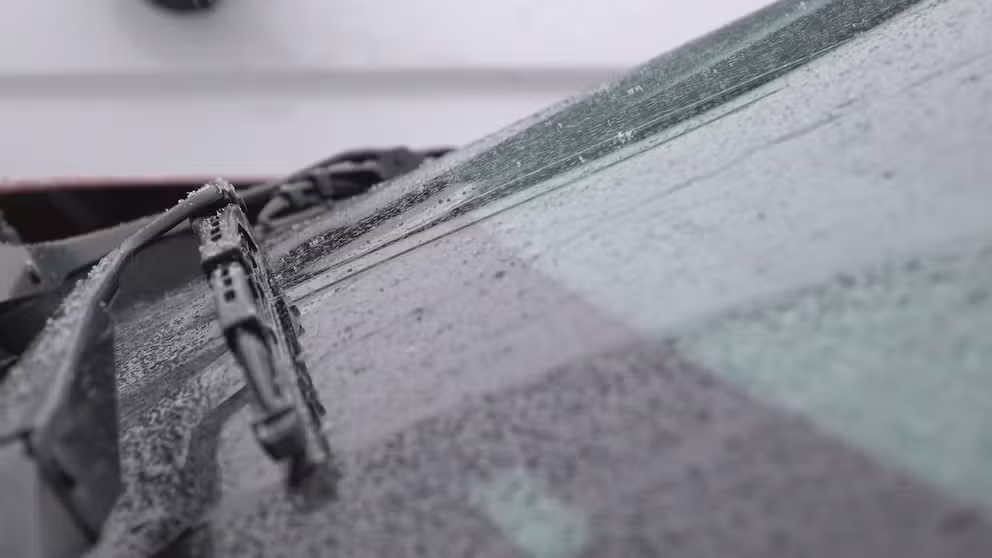How an Alabama woman invented the windshield wiper
In the early 20th century, Mary Anderson made driving in inclement weather a much safer affair
The woman behind the windshield wiper
In the early 19th century, Mary Anderson made driving in inclement weather much safer by inventing the windshield wiper.
The unsung hero of any vehicle is probably the windshield wiper.
It’s not the first feature anyone sees when admiring a car. It doesn’t help the car speed up when a driver wants to be fast and furious, nor does it help the car slow down when a driver goes a little too fast and too furiously.
So, oftentimes, the windshield wiper goes unnoticed.
But anyone who’s ever been behind the wheel of a car would never want to be without windshield wipers. They’ve become a standard part of vehicles for decades, and many drivers are tested on how they access their wipers, as part of getting their license.
This oft-forgotten yet significant component of cars came about over a century ago, thanks to an oft-forgotten woman who made a significant contribution to the automotive industry.
A window cleaning device
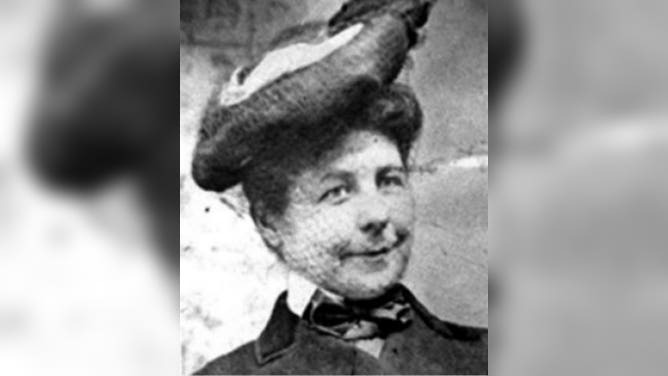
Mary Anderson, inventor of the windshield wiper.
"When I think of Mary Anderson, I think of a pioneer, I think of an entrepreneur and I think of a woman who was really interested in forging her own path," said Rini Paiva, executive vice president of selection at the National Inventors Hall of Fame.
Anderson was an entrepreneur during the late 19th century and beginning of the 20th century.
"She is a woman who was really ahead of her time," Paiva said. "She was a go getter."
Anderson hailed from Alabama and spent much of her time in places like California and Tennessee. But a trip to New York City became the ignition that led her down the road to becoming an inventor.
According to Paiva, Anderson was riding a trolley car during inclement weather when she noticed the trolley driver struggling to see through his windshield.
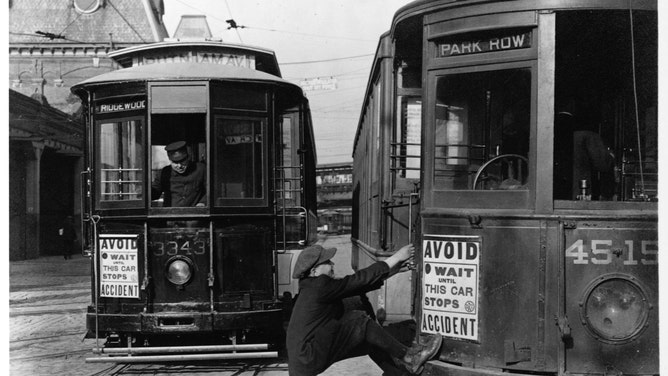
Trolleys like these were used in the early 20th century.
(Library of Congress / Corbis / VCG / Getty Images)
"He would reach his arm outside the window, and sometimes he would even have to stop the car to get out to clear the window," Paiva said.
When Anderson returned home, she thought there has to be a better way.
"She actually worked with the designer to come up with the idea and ended up filing a patent that ended up being granted pretty quickly in in the early 1900s," Paiva said.
According to her original U.S. Patent Office form, Anderson submitted her filing in June 18, 1903 and received her patent on November 10. The patent titled Anderson’s invention as a ‘window cleaning device.’
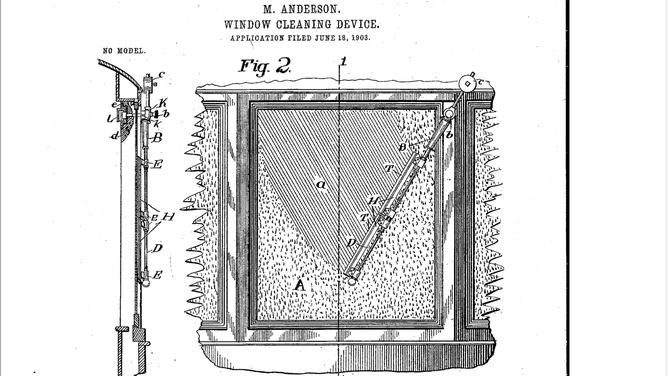
A section of Mary Anderson's patent, showcasing how her window cleaning device would work.
(U.S. Patent Office)
The window cleaning device included a radially swinging metal arm attached to a window that cleared away snow, rain and sleet from the window. The device was manually controlled by using a handle inside a car.
Also, as Anderson wrote in her patent, the arm component was removable "thus leaving nothing to mar the usual appearance of the car during fair weather."
A sleeper hit
Given the success of Anderson’s patent and the ubiquitous nature of windshield wipers today, one can imagine that the invention became an immediate hit.
Unfortunately, the opposite was true for the device and for Anderson.
"She did some outreach, but there really wasn't any company or individual that showed any interest in her windshield wiper invention," Paiva said.
"You have to remember that this was the early 1900s. So, automobiles really weren't as widespread as they would be even a couple of decades later."
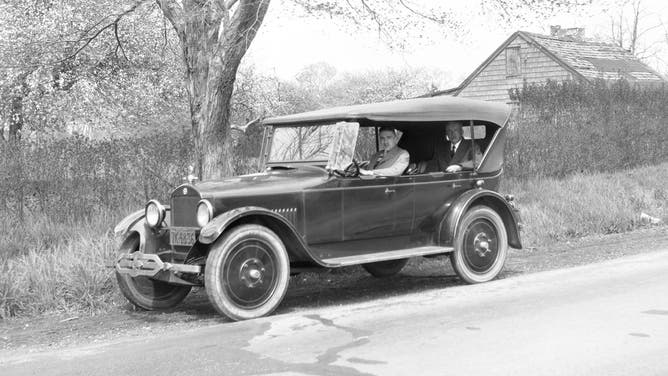
Drivers of early automobiles didn't have windshield wipers.
(Eugene L. Armbruster / The New York Historical Society / Getty Images)
Apart from the relative rarity of cars, according to Paiva, Anderson’s device didn’t catch on because some people thought the windshield wiper would be a distraction for drivers.
It wouldn’t be until decades later, after automobiles became more widespread, did the windshield wiper gain popularity.
By the time windshield wipers were being installed on vehicles, Anderson’s patent had expired. So, she did not receive any royalties that came from the development and spread of windshield wipers.
LEARN: HOW FERRARI IS TRYING TO REINVENT THE WINDSHIELD WIPER
While such a circumstance has left many inventors poor and destitute, Anderson prevailed. Because as she worked on her invention, she was also helping care of a wealthy aunt, who left behind an inheritance for Anderson and her family.
Miss Independent
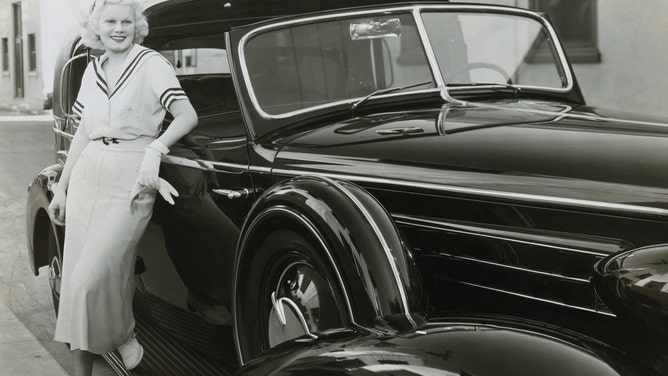
Actress Jean Harlow poses next to a car with windshield wipers in the early 1930s.
(Bettmann / Getty Images)
Today’s windshield wipers can be traced back over a century to one of the few early women inventors.
"I think that being an independent inventor is tough, and it had to be tough for [Anderson] as a woman inventor at that time, coming up with something that really wasn't even needed yet," Paiva said.
"I do think it's important for people to know that Mary Anderson is a very unique individual for the time," she said.
"Uncovering the stories of people like her will serve as great inspiration for the upcoming generation."
